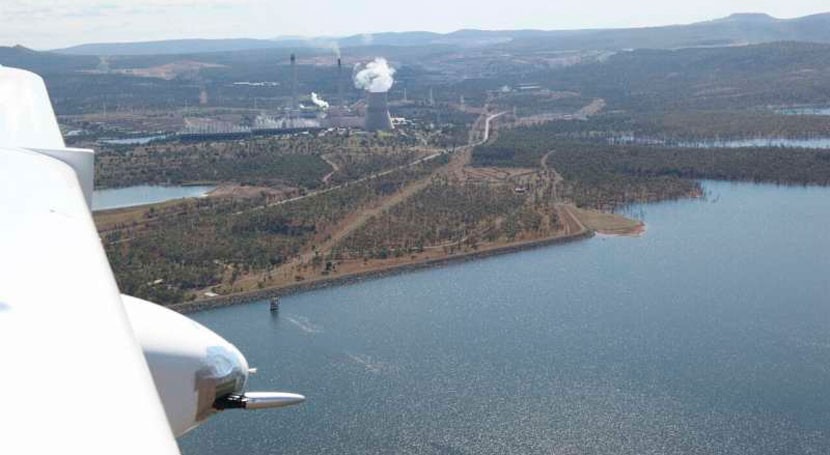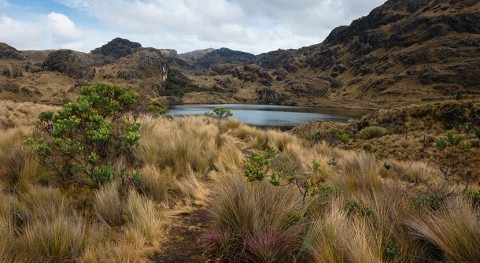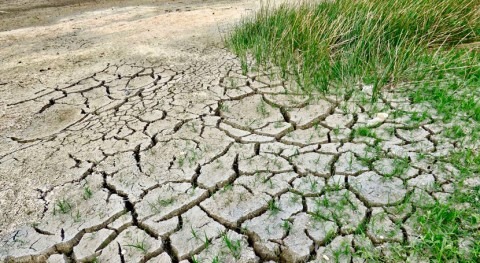Modern coal-fired power stations produce more ultrafine dust particles than road traffic and can even modify and redistribute rainfall patterns, a new 15-year international study shows.
The study indicates filtration systems on modern coal-fired power stations are the biggest source of ultrafine particles and can have considerable impacts on climate in several ways.
In urban areas, road traffic has long been considered the main source of small particle emissions which have the potential to adversely affect health and the environment.
However, long-term measurements carried out by two scientists, Professor Wolfgang Junkermann from the Karlsruhe Institute of Technology (KIT) in Germany and Professor Jorg Hacker from Airborne Research Australia—who are affiliated with Flinders University—have revealed a source that particularly affects regional climate: modern coal-fired power stations.
We found that fossil power stations have for many years become the strongest individual sources of ultrafine particles worldwide
In the Bulletin of the American Meteorological Society, the researchers report how coal-fired power stations clearly emit large amounts of ultrafine particles (UFP) through filtering technology of exhaust gas. The key findings of the long-term study are:
- Modern coal-fired power stations emit more UFP than urban road traffic
- UFP can harm human health
- UFP can affect rainfall distribution on local to regional scales by increasing the condensation nuclei count
- UFP can be transported in layers with high concentrations for hundreds of kilometres and then lead to localised "particle events" (dramatic spikes in short-term particle concentrations on the ground) far away from their source.
The research also found UFP concentrations have increased continuously since modern coal-fired power stations were commissioned in many locations around the world.

Professor Wolfgang Junkermann recording measurements near the Boxberg power station in German. The aircraft do not fly over power stations studied. Credit: Professor Wolfgang Junkermann, Karlsruhe Institute of Technology
For the measurement flights in Europe, Australia and even Mexico and Inner Mongolia, the research team used two rather unusual small research aircraft, the world's most comprehensively instrumented motorglider in Australia and a 'trike' developed in Germany—believed to be the smallest manned research aircraft worldwide.
The flying laboratories are equipped with highly sensitive instruments and sensors measuring dust particles, trace gases, temperature, humidity, wind and energy balances.
"Our two research aircraft are particularly suitable to follow the plumes from the smoke stacks downwind for hundreds of kilometres and study their behaviour in great detail," says Professor Hacker, who is based at Airborne Research Australia (ARA) in South Australia.
The scientists then linked these data with meteorological observations and used dispersion and transport models to trace back their origin.
"In this way, we found that fossil power stations have for many years become the strongest individual sources of ultrafine particles worldwide. They massively influence meteorological processes and may cause extreme weather events, including intensive rain events.
"By redistributing rainfall events, this can lead to drier than usual conditions in some places and to unusually heavy and persistent strong rainfall elsewhere," Professor Hacker says.
With a diameter of less than 100 nm, UFP have an enormous impact on environmental processes, capable of influencing the properties of clouds and precipitation, the paper says.
"The UFP offer surfaces for chemical reactions in the atmosphere or may influence the properties of clouds and precipitation," says Professor Junkermann.
In open nature, forest fires, dust storms or volcanic eruptions produce fine particles, but mostly not in the nanometer range.
To study the existence and distribution and transport processes of UFP, the researchers not only flew their instruments near to or downwind of coal-fired power stations but also over remote regions where very low UFP concentrations have been measured in the past at ground level.
Specifically, in regions with conspicuous precipitation trends such as inland Western Australia and Queensland, the researchers found that UFP concentrations have increased constandly and could be linked to emissions made by coal-fired power stations and refingeries.
"Exhaust gas cleaning takes place under conditions that are optimal for the new formation of particles. Ammonia is added to the exhaust gases in order to convert nitrogen oxides into harmless water and nitrogen," Professor Junkermann says.
At the same time ammonia is available at the right mixing ratio for particle formation, resulting in concentrations in the exhaust gas becoming high. After emission at 200-300 m height from smoke stacks, the very small particles typically spread over several hundreds of kilometres depending on weather and climate conditions in the atmosphere, the researchers found.



















